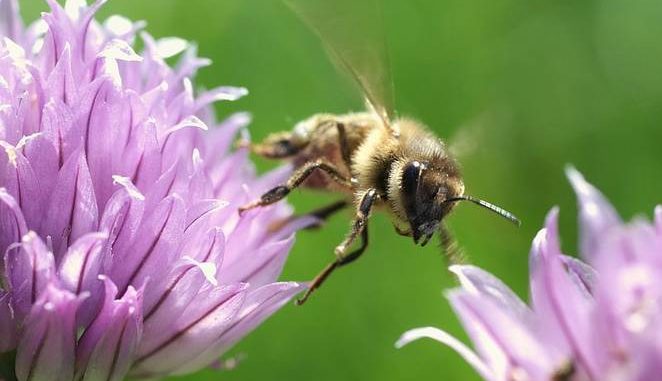
According to new research European honeybees are being poisoned with as many as 57 different pesticides.
The alarming discovery was made by a team from the National Veterinary Research Institute in Poland using a method, more commonly used to detect pesticides in food, to analyse poisoned bees for a range of substances.

BYPASS THE CENSORS
Sign up to get unfiltered news delivered straight to your inbox.
You can unsubscribe any time. By subscribing you agree to our Terms of Use
Latest Video
Using the new method researchers hope they may be able help unravel the mystery behind the widespread decline of honeybees in recent years and develop an approach to saving them.
The study has been published in the Journal of Chromatography
Phys.org reports:
Honeybees are under threat globally: in the US, dramatic declines in bee populations due to a condition called colony collapse disorder (CCD) continues to put crops at risk an farmers out of business. Several studies have shown a link between pesticide use and bee deaths and the European Union has banned the use of neonicotinoid pesticides.
But it’s not as simple as banning one pesticide that’s killing bees; the relationship between pesticide use and bee death is complex and scientists are still trying to figure out exactly what’s happening. In the new study, researchers from the National Veterinary Research Institute in Poland have developed a method for analyzing 200 pesticides at the same time, to figure out what’s really putting honeybees at risk.
“Bee health is a matter of public concern—bees are considered critically important for the environment and agriculture by pollinating more than 80% of crops and wild plants in Europe,” said Tomasz Kiljanek, lead author of the study from the National Veterinary Research Institute in Poland. “We wanted to develop a test for a large number of pesticides currently approved for use in the European Union to see what is poisoning the bees.”
With so many pesticides currently in use, it’s difficult to work out which ones are harming the bees. Certain combinations of pesticides, or their use over time, could affect honeybees in different ways. In order to understand what’s really going on, we need to know which pesticides and at what concentration levels are present in honeybees.
Kiljanek and the team used a method called QuEChERS, which is currently used to detect pesticides in food. With this analysis, they could test poisoned bees for 200 different pesticides simultaneously, as well as several additional compounds created when the pesticides are broken down. About 98% of the pesticides they tested for are approved for use in the European Union.
The team used the method to investigate more than 70 honeybee poisoning incidents. Their findings revealed 57 different pesticides present in the bees—it’s a toxic puzzle they hope their new method will help solve.
“This is just the beginning of our research on the impact of pesticides on honeybee health,” said Kiljanek. “Honeybee poisoning incidents are the tip of the iceberg. Even at very low levels, pesticides can weaken bees’ defense systems, allowing parasites or viruses to kill the colony. Our results will help expand our knowledge about the influence of pesticides on honeybee health, and will provide important information for other researchers to better assess the risk connected with the mix of current used pesticides.”


